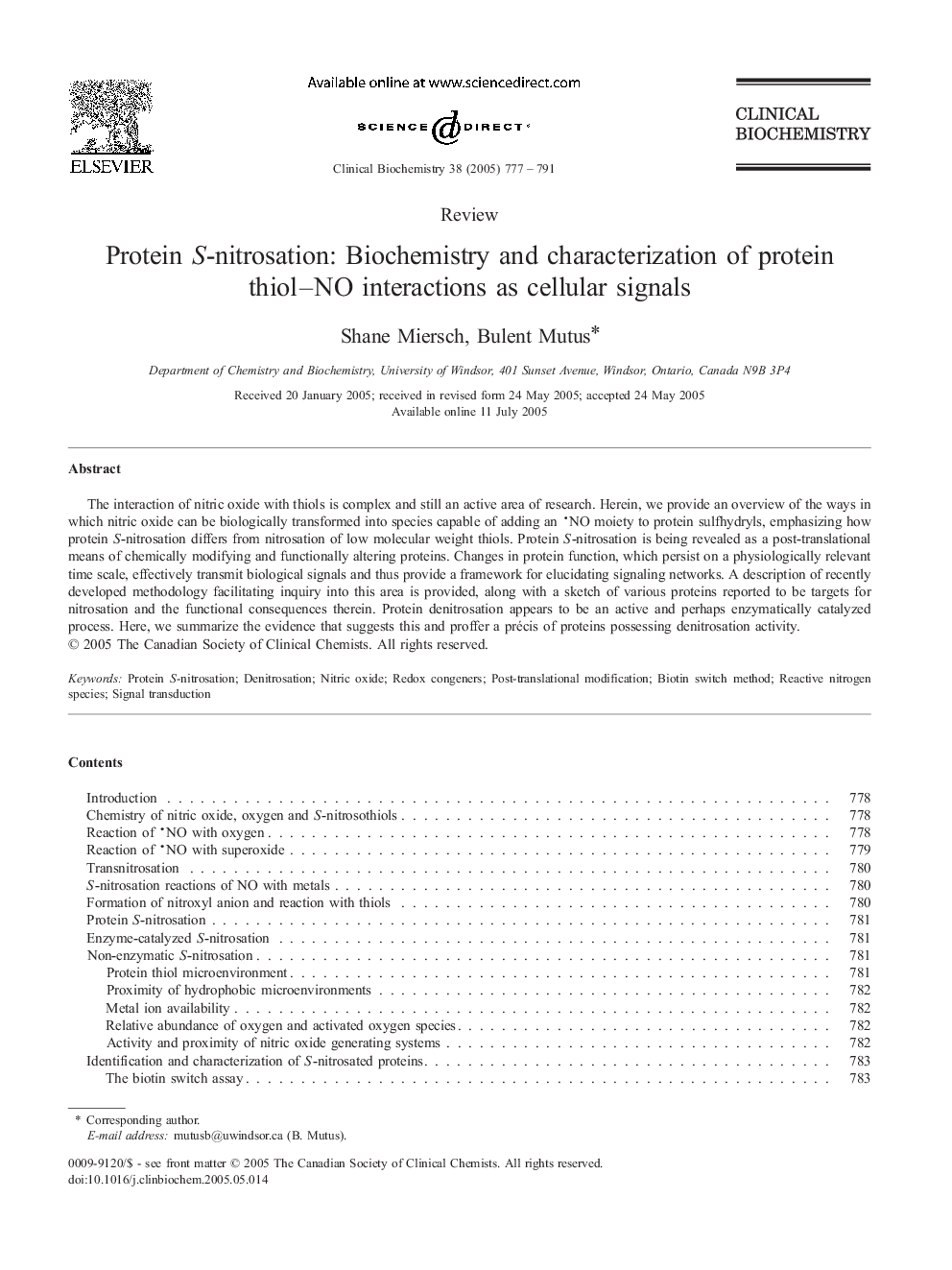| Article ID | Journal | Published Year | Pages | File Type |
|---|---|---|---|---|
| 10818058 | Clinical Biochemistry | 2005 | 15 Pages |
Abstract
The interaction of nitric oxide with thiols is complex and still an active area of research. Herein, we provide an overview of the ways in which nitric oxide can be biologically transformed into species capable of adding an NO moiety to protein sulfhydryls, emphasizing how protein S-nitrosation differs from nitrosation of low molecular weight thiols. Protein S-nitrosation is being revealed as a post-translational means of chemically modifying and functionally altering proteins. Changes in protein function, which persist on a physiologically relevant time scale, effectively transmit biological signals and thus provide a framework for elucidating signaling networks. A description of recently developed methodology facilitating inquiry into this area is provided, along with a sketch of various proteins reported to be targets for nitrosation and the functional consequences therein. Protein denitrosation appears to be an active and perhaps enzymatically catalyzed process. Here, we summarize the evidence that suggests this and proffer a précis of proteins possessing denitrosation activity.
Keywords
Related Topics
Life Sciences
Biochemistry, Genetics and Molecular Biology
Biochemistry
Authors
Shane Miersch, Bulent Mutus,
